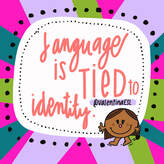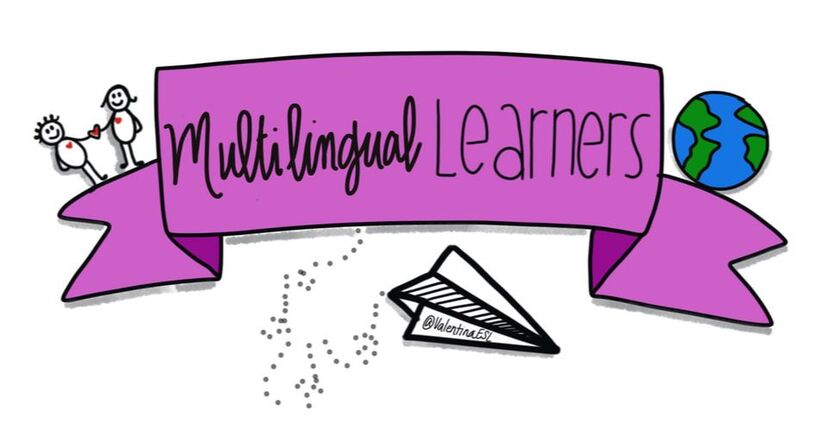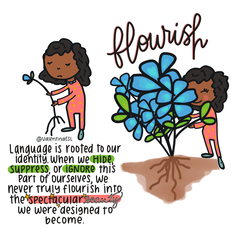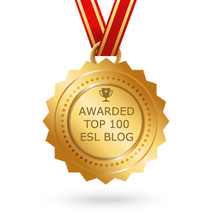|
“There is something special about the languages we learn early in life”, research indicates. Worldwide over 7,000 languages are spoken. While linguistic diversity is valued by many countries in the world, 40% of these languages are endangered. International Mother Language Day is celebrated on February 21st each year in an effort to shine a spotlight on the beauty and power of linguistic diversity and multilingualism.  UNESCO reports that 40% of the world’s population does not have access to education in the language they speak. This was my truth as an immigrant child who was born speaking and hearing Serbian at home and then starting school in America where English was the language of instruction. Serbian is not a common minority language in the United States so that’s not really surprising. On the other hand, Spanish is the second most common language in the US yet many Spanish-speaking people, young and older, have felt the pain of linguistic oppression. When I met my husband, I learned that his Spanish proficiency was very limited. In his childhood home, English was the only language spoken. His exposure to Spanish was limited to summers that he spent with his Spanish-speaking grandparents. Why didn’t his parents speak Spanish at home with him? This question bothered me so one day I sat down with Jose, my father-in-law, who came to America at the age of 13 and we talked. “Speaking Spanish at school was not an option. If the teachers heard us speaking to each other in Spanish, they would separate us and tell us we were here to learn English. English was pushed on me as the most important. When I had my own family, I didn’t feel like Spanish was a necessity. I look back now and I realize that wasn’t right. But back then we had to comply because we were in their school.” Linguistic oppression like Jose experienced threatens languages still today. Languages are wiped out when they are no longer spoken and shared from generation to generation. Culture is lost. Families that were once closely knit become widely spread. Happily, I can say that as an adult my husband was able to become a fully proficient Spanish speaker despite the experiences he encountered growing up. It’s heartbreaking to hear about the experiences some multilingual learners have faced and it is also something we can learn from, control, something we can fix. Jose explains that as a student with little English proficiency, he was placed in a mainstream classroom in California with no support and had to figure out language and content on his own. Many would consider this type of instruction submersion-sink or swim. He and his siblings often relied on one another for help with schoolwork. Together they experienced a lot of trial and error. His advice to us as educators is to have patience and to be observant of the students. He says, “water me a little more so I can grow like the others. Because if you don’t, the others will keep growing and I’ll stay behind.” It is naive to think that practices like the ones Jose describes are no longer happening today. They do. Still today multilingual learners are placed in classrooms with no support. Still, today languages are ignored and being wiped out. We can do better. Sofia, a sophomore in college studying journalism, came to America when she was a fourth grader. She describes herself as a Spanish-speaking student knowing only very basic words in English at the point of her entry into a Texas school. But today Sofia says her day-to-day is English though she continues to use Spanish when speaking with her parents and feels it is part of her identity. Language attrition, “a speaker is losing proficiency in a language he or she previously mastered as a result of a change in linguistic behavior due to a severance of the contact with the community in which the language is spoken” is not uncommon (Gallo et al, 2021; Schmid, 2008). Sofia recalls simple routines like switching classes and lining up to go to the cafeteria for lunch were confusing. These routines were not custom in Mexico where she had previously been in school. She also emphasizes the importance of teachers’ patience with multilingual learners. And she adds that it’s important to push students to get involved in the student council, yearbook committees, and other organizations, and programs at school. She finds it interesting that today she is studying journalism, fully writing and speaking in a language that 10 years ago she couldn’t write and speak in. Educators in elementary and secondary classrooms have the power to increase multilingual learners’ confidence and self-esteem about their language identities. We can help multilingual learners use their primary languages as assets. The small and big things we do each day to convey messages about language are heard and received by all stakeholders.
When language is ignored, there may be a danger of limiting participation and cutting off valuable resources. Every child deserves to be seen, heard, and valued for who they are fully and completely. Comments are closed.
|
Categories
All
|


 RSS Feed
RSS Feed
